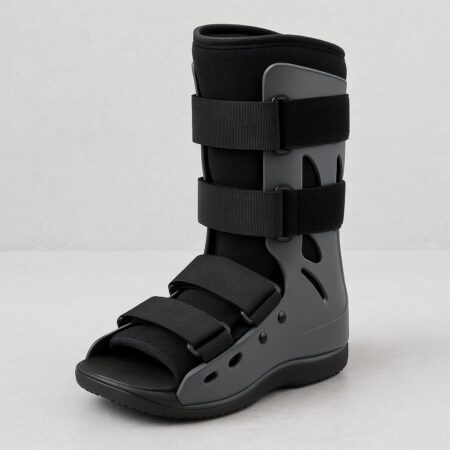If you’ve been active most of your life, chances are you’ve sprained your ankle at some point. Maybe you went to urgent care, saw an orthopedist, or even a physical therapist in McLean, and were told to wear a walking boot.
It sounds logical to protect the injury, reduce swelling, and prevent further damage. But here’s the truth: in most cases, that advice can actually slow down your recovery and make it harder to return to the sports and activities you love.
When Is a Walking Boot Actually Necessary?
There’s a time and place for a walking boot. If you have a severe (grade 3) ankle sprain or a fracture, a short period in a boot may be appropriate to stabilize the joint and protect the tissues while they heal.
But those cases are rare. The majority of ankle sprains we see at our physical therapy clinic in McLean are mild to moderate. In these situations, wearing a boot can do more harm than good.
Why a Boot Can Make Your Ankle Worse
When you immobilize the ankle too soon, the muscles around it stop doing their job. The boot provides a false sense of stability, which causes your stabilizing muscles to become weaker and less responsive.
Over time, this leads to:
- Muscle deconditioning and weakness around the ankle and foot
- Reduced proprioception (your body’s ability to sense position and balance)
- Joint stiffness that alters your walking and running mechanics
- Compensations in other joints like your knees, hips, and lower back
All of these issues make it harder to get back to your sport — and increase your risk of re-injury.
What You Should Do Instead
If your sprain isn’t severe, you want to get the ankle moving early — safely and within a pain-free range of motion.
At Cohen Health and Performance in McLean, our physical therapists guide athletes through a structured plan that focuses on:
- Restoring range of motion as soon as possible
- Rebuilding strength through those ranges
- Progressing to weight-bearing activities that retrain balance and coordination
- Integrating dynamic drills like single-leg squats and plyometrics
- Preparing for sport-specific demands (cutting, sprinting, decelerating, etc.)
Whether you’re a runner, tennis player, or field-sport athlete, this approach ensures your ankle not only heals but becomes stronger and more resilient than before the injury.
The Smart Way to Recover from an Ankle Sprain
Even though ankle sprains are common, they shouldn’t be ignored. Trying to “play through” the pain or relying on a boot too long can lead to chronic instability, recurring injuries, and even new pain elsewhere in the body.
The best thing you can do is get a proper evaluation from a licensed physical therapist who understands the specific demands of your sport or activity.
At Cohen Health and Performance, our team helps athletes and active adults in McLean and Bethesda recover faster, move better, and perform at a higher level, without unnecessary time in a boot.
Ready to Get Back on Your Feet?
If you’ve recently sprained your ankle or are still dealing with stiffness and pain from an old injury, we’d love to help.
👉 Schedule an evaluation today and get a customized plan designed to help you return to what matters most. Pain-free movement, strength, and confidence on your feet.
